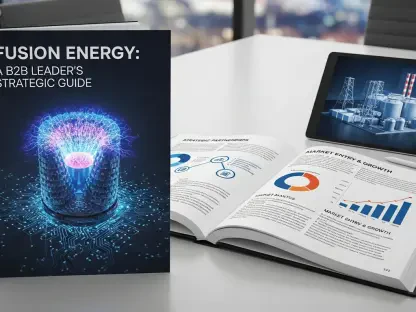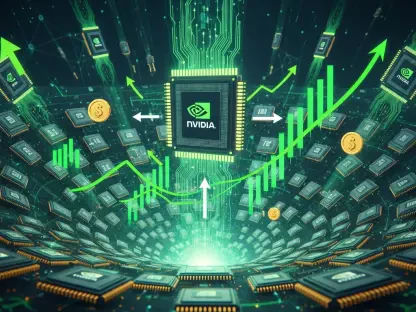In this interview, we delve into Mitsubishi Corporation’s strategic interest in expanding its natural gas operations in the U.S. with Christopher Hailstone, a renowned expert in energy management. With his extensive experience in renewable energy and electricity delivery, Hailstone offers valuable insights into grid reliability and security, as well as the potential acquisition of Aethon Energy Management’s assets. We explore themes surrounding Mitsubishi’s long-term goals, the significance of the Gulf coast’s energy export facilities, the attractiveness of the Haynesville shale formation, and the challenges and benefits of such an acquisition.
Can you provide an overview of Mitsubishi Corporation’s strategic interest in expanding its natural gas operations in the U.S.?
Mitsubishi Corporation’s interest in the U.S. natural gas market forms part of its broader strategy to solidify its position in the global LNG sector. The U.S., particularly with its abundant shale resources, offers the opportunity for Mitsubishi to enhance its upstream capabilities and access new liquefaction terminals, which can boost its supply chains across Asia and Europe. Integrating these assets strengthens its competitive edge in delivering clean energy solutions worldwide.
How would the acquisition of Aethon Energy Management’s assets align with Mitsubishi’s long-term goals in the LNG sector?
Acquiring Aethon’s assets aligns perfectly with Mitsubishi’s long-term ambitions by expanding its footprint in key shale formations, like Haynesville. These assets not only increase its production capacity but also enhance its pipeline infrastructure, which is crucial for transport efficiency and cost management. This expansion reinforces the corporation’s commitment to a robust LNG supply, thereby supporting its growth in international markets.
What are the potential benefits for Mitsubishi in acquiring shale production and pipeline assets adjacent to the U.S. Gulf coast?
The Gulf coast is a strategic location due to its proximity to existing LNG facilities and export terminals. For Mitsubishi, acquiring adjacent shale production and pipeline assets could facilitate a seamless integration into its existing logistics network, enhancing operational efficiency. Additionally, the location offers strategic advantages in terms of quick access to global markets, cost reductions, and potentially increased profit margins through more direct routes for export.
Could you discuss the significance of the energy export facilities along the Gulf coast for Mitsubishi’s LNG operations?
The Gulf coast is integral to Mitsubishi’s operations, serving as a gateway for LNG exports to major markets around the world. Facilities in this area are pivotal because they allow for large-scale liquefaction and export, fulfilling global demand with minimal delays. These operations support Mitsubishi’s strategy of leveraging strategic locations to ensure reliable and efficient delivery, crucial in maintaining its status as a leading LNG provider.
How do you expect this potential acquisition to impact Mitsubishi’s existing LNG portfolio?
The acquisition will likely offer Mitsubishi substantial leverage within its existing LNG portfolio, introducing new production capacities and enhancing overall supply reliability. Integrating these assets means Mitsubishi can operate with increased flexibility, optimizing its response to market demands and enhancing its operational synergies across various geographical locations.
What makes the Haynesville shale formation in Louisiana and East Texas an attractive investment for Mitsubishi?
The Haynesville shale formation is an attractive investment due to its high reserve quality and production efficiency. Mitsubishi sees value in the formation’s ability to provide substantial output with advanced technology, translating into economic benefits amid rising demand for cleaner energy. Haynesville presents a prime opportunity to support Mitsubishi’s expansion efforts in the competitive U.S. energy landscape.
Are there specific challenges Mitsubishi might face when integrating Aethon’s operations into its existing business structure?
Integrating Aethon’s operations presents challenges like aligning different corporate cultures, operational procedures, and ensuring compliance with regulatory frameworks. Mitsubishi must also address potential technological integration to avoid disruptions. Successful integration requires careful strategic planning, robust communication channels, and potentially significant upfront investments to harmonize synergies effectively.
How might the involvement of other stakeholders like RedBird Capital Partners and Ontario Teachers’ Pension Plan influence the acquisition process?
The involvement of stakeholders such as RedBird Capital Partners and Ontario Teachers’ Pension Plan could intricately shape the acquisition process, bringing added layers of negotiation complexity and partnership dynamics. These entities may assert considerations impacting pricing, strategic direction, or operational control that Mitsubishi must account for to gain consensus and ensure alignment in strategic objectives.
Are there any regulatory hurdles that Mitsubishi might encounter in completing this deal?
While Mitsubishi is equipped to manage a myriad of regulatory challenges, there could be barriers related to antitrust considerations, environmental regulations, and local governmental approvals. Navigating these requires strategic expertise and significant bureaucratic engagement, which could delay the acquisition process but are often manageable with comprehensive legal and compliance strategies.
Given the scale of the acquisition, how does Mitsubishi plan to finance the $8 billion deal?
Financing such a sizable acquisition demands Mitsubishi explore a combination of funding sources, including capital reserves, loans, or strategic partnerships. Given its strong financial portfolio and global banking relationships, Mitsubishi is likely to leverage a mix of equity and debt financing to spread risk and optimize the capital structure, ensuring financial stability post-acquisition.
How do you anticipate the broader market reacting to Mitsubishi’s potential acquisition of Aethon, considering the recent fluctuations in Mitsubishi’s share price?
The market reaction will likely vary based on perceptions of the acquisition’s strategic merits and Mitsubishi’s share price stability. Positive sentiment may arise from perceived growth potential and sector consolidation, boosting investor confidence, while fluctuations could prompt cautionary approaches. Consistent communication about the acquisition’s benefits and strategies for mitigating risks are crucial to securing favorable market reactions.
Can you discuss any previous acquisitions or partnerships that Mitsubishi has pursued in the U.S. energy sector?
Mitsubishi has actively pursued strategic initiatives in the U.S. energy sector, including partnerships and investments in liquefied gas facilities and technology ventures. Historical endeavors demonstrate Mitsubishi’s approach to expanding capacity, enhancing operational synergies, and diversifying its energy portfolio, showcasing a deep-rooted commitment to fostering growth and innovation in the U.S. market.
How do Mitsubishi’s global LNG operations benefit from expanding its footprint in the U.S. shale market?
A greater U.S. presence allows Mitsubishi to access abundant shale gas reserves, bolstering its production capabilities. This expansion enhances Mitsubishi’s supply certainty and supports its goal of leading LNG sourcing and distribution, creating supply chain efficiencies and competitive advantages. As global energy demand grows, U.S. shale markets represent a cornerstone in its diversification strategy.
How important is the U.S. market in Mitsubishi’s global LNG strategy, compared to other regions like Asia or Europe?
The U.S. market is pivotal to Mitsubishi’s LNG strategy as it provides a significant supply base and technological advancements related to shale gas production. This complements its operations in Asia and Europe by ensuring diversified sourcing and competitive pricing. As these regions face increasing energy demands, Mitsubishi’s robust U.S. presence is crucial for sustaining and expanding its global delivery capabilities.
If the acquisition talks do not result in a deal, what other strategies might Mitsubishi employ to achieve similar growth in its U.S. operations?
Should talks fall through, Mitsubishi might explore joint ventures, alternative acquisitions, or investments in technological innovations to achieve continued growth in its U.S. operations. Strategic diversification into complementary energy sectors or expansion of existing assets, optimizing operational efficiencies, could also serve as alternative pathways to meet its expansion objectives.
How does Mitsubishi’s upstream production strategy differ across its various international LNG projects, and how does the Aethon deal fit into this strategy?
Mitsubishi adopts nuanced upstream strategies to navigate distinct market dynamics worldwide. Its projects vary from capital-intensive development efforts to flexible production models that optimize local partnerships and advanced technologies. The Aethon deal complements the strategy by enriching Mitsubishi’s asset base, fostering infrastructure improvements, and enhancing production outputs across its LNG portfolio.
Do you have any advice for our readers?
Energy transitions present both challenges and opportunities. Staying informed about industry dynamics and understanding market shifts are crucial for any stakeholder—be it investors, corporate professionals, or consumers—hoping to capitalize on emerging trends or adapt to evolving landscapes. Being proactive and adopting a long-term perspective can foster resilience and position one advantageously in the energy realm.









